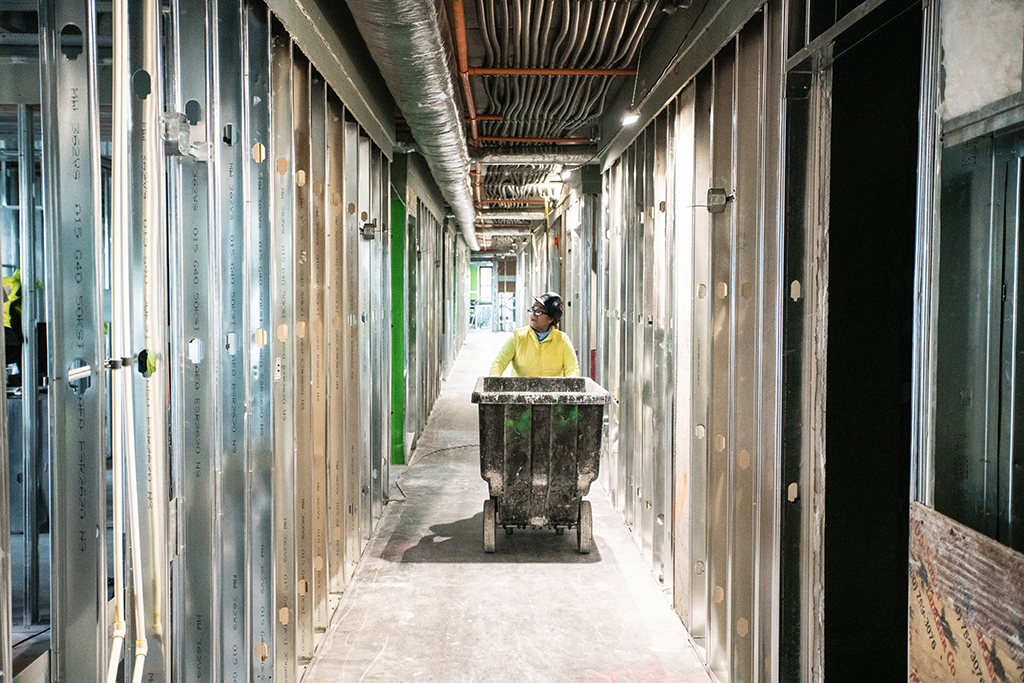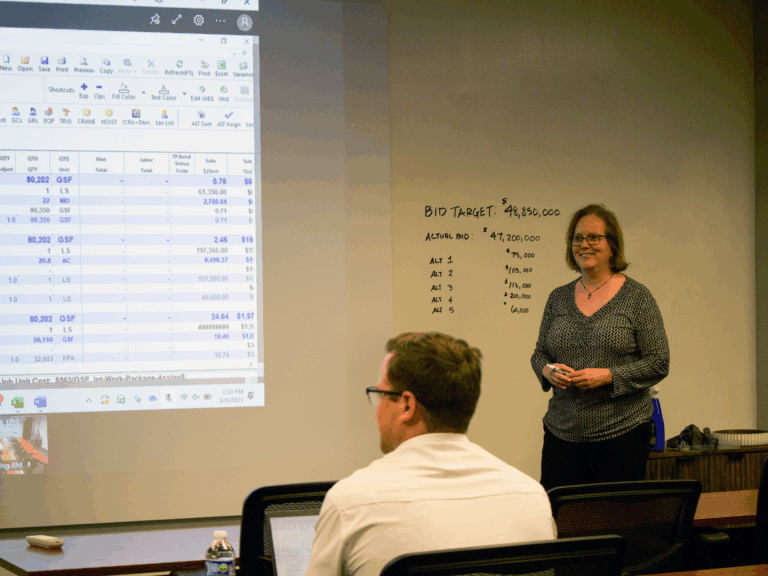
Whether you’re looking to achieve LEED certification for your new building or simply hoping to go a little greener on your next project, you’ve probably wondered, or even researched, the cost associated with environmentally friendly construction. It’s true that in some ways, building green can initially add cost to a project’s budget. But, if planned and done right, green buildings can deliver cost savings back in the form of energy efficiency, increased tenant rent, and community support. What I want to talk about, though, is a simple way to reduce waste and be a good steward to our environment, without significant added cost.
Waste removal. It’s not glamorous, but it’s a huge part of construction. According to Buildings Magazine, the average new construction project creates 3.9 pounds of waste per square foot. So, a 100,000-SF hospital expansion might yield nearly 177 tons of construction and demolition waste. In fact, the EPA reported in 2017 that 569 million tons of C&D debris were generated in the United States. If our industry committed to taking more proactive steps to diverting waste from landfills, we could create a significant positive impact to the environment. The goal of waste diversion is to reduce solid waste and keep it out of landfills through reduction, recycling, reuse, or composting. In this case, I’m suggesting sorting recyclable and resuable construction waste and diverting away from landfills to appropriate facilities.
Right now, you might be asking, “That’s all great, but how much will that cost my project?” I recently investigated the cost impact of waste diversion and found that on average, waste management accounts for less than .25% of our total project cost on healthcare projects. I believe that in many cases, a diversion plan could be put in place at little to no additional cost to the project. I’ve challenged our project teams to consider diversion plans, and I’d like to pass that challenge on to our industry partners as well. Here’s 3 factors to keep in mind when considering if a waste diversion plan is right for your project:
Location, Location, Location
With most things, location dictates the cost. Some areas accept comingled construction debris (steel, concrete, masonry, wood,) which would mean little to no additional cost for contractors. For locations that require waste to be separated and managed at the construction site, there could be some added cost and manpower to divert waste. It would require separate containers, monitoring of the containers, and could incur additional surcharges for hauling materials to specific sites to receive the recycled materials. But I’ve found those fees and costs are usually minor in comparison to the amount of waste we can divert from landfills.
Ask the Right Questions
To find out what the location requirements are, you simply need to call the waste management service for your job site location. Ask the right questions: “Is there a place to take recycled C&D waste?” “Will you pick up diverted waste?” “Does the waste have to be separated?” “Is there a fee for pick up?” I spoke extensively with a representative from Waste Management about this issue and found in most cases they are willing to work with job sites to help divert waste away from landfills. You just have to take the initiative and ask the right questions during preconstruction while planning your work.
Establish Training
Once you’ve asked all the right questions and know how your waste needs to be separated and diverted, you can decide if you need to train employees on new waste diversion practices. The process could be as simple as having two separate containers for recyclable and non-recyclable waste, with one employee monitoring the bins during active work. The most important step in this shift towards more responsible waste management is to get buy-in from trade partners. It’s another task in our already complicated, busy workday, but one that I believe is worth it considering the impact we can have on our environment.
Every week, I make two trips to my curb — once for trash pick up and once for recycling pick up. I’d guess most of us do some sort of recycling sorting at home. It’s an extra step of course, but one we adapt to because of the greater good. Why not apply the same behavior to our job sites where we can have a significantly larger impact? If we want to reduce waste and improve the industry, waste diversion is a simple method that, if done on job sites across the country, can greatly reduce landfill waste. I’m confident our teams at Hoar will rise to the challenge of more responsible waste diversion at little to no extra cost, and I’d love to see our industry partners take on the challenge as well.

